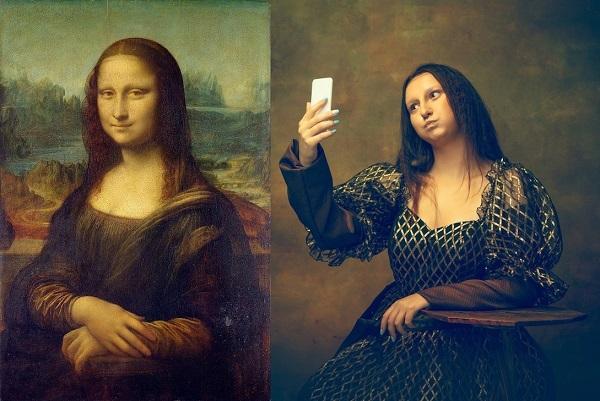We call intertextuality the "dialogue" that takes place between two different texts, when one makes reference to another that already existed, drawing inspiration from its form or message to create a new discourse. it can occur explicitly (more easily noticed) or implicit (less easily noticed). Also, there are different types of intertextuality. Let's meet some?
Read too: Comparison - figure of speech that links different elements
Types of intertextuality
Here are some very common types of intertextuality.
Title: excerpt from another text placed at the beginning of a work or chapter to serve as an inspiration or theme for what will be addressed in the new text.
Quote: excerpt from another text, quoted with the original source, which brings ideas that will also be addressed in the text itself. The passage in question is used exactly as it was written in the original source.
Paraphrase: like the quote, it is a direct reference to ideas discussed elsewhere. However, while the quote uses the excerpt exactly as it was written in the original source, the
paraphrase it is the rewriting of this passage in the author's own words of the new text. Reference is also made to the original source.Translation: passage of a text from one language to another language.
Allusion: indirect reference to other texts through the use of symbolic elements, such as certain vocabularies or specific forms of the original work.
Parody: rewriting another work in a comical and ironic way with the intention of entertaining or criticizing.
In addition to these, there are other types of intertextuality among the various discursive genres, such as bricolage, pastiche, among others.
Explicit and implicit intertextuality
Intertextuality can take place implicitly or explicitly.
Explicit Intertextuality: is the type of referral made directly. It is more easily perceived, as it commonly points to or marks the original font with which the text is dialogued.
Implied Intertextuality: the reference is not made directly. Therefore, it is more difficult to know the original source and understand that there is a reference being made. For this, it is necessary to know the original source and recognize the existing relationship on your own.
Examples of intertextuality
intertextuality can occur between genres same or even different discursives. For example, when a poem alludes to another poem, intertextuality occurred between two equal discursive genres. However, if a song alludes to a novel or if a cartoon alludes to a painting, we say that there was intertextuality between two different discursive genres. This is what we will see in the examples below.
Examples of intertextuality in non-verbal language
non-verbal language is one that does not use speech or writing. Instead, use images and symbols to communicate something. This is the case of paintings, sculptures, drawings, among other forms of expression.
See an example of intertextuality in non-verbal language:

The picture on the left is called Mona Lisa and was painted by Leonardo da Vinci in 1503. The table on the right is a retelling of the Mona Lisa, a parody which shows a current version of the Mona Lisa taking a self-portrait with her cell phone.
See another example:

Érico Verissimo wrote the book “The adventures of the red plane” in 1936. The edition shown on the left was illustrated by Eva Furnari and published in 2003. On the right, we see a Poster from the 2014 animation “The adventures of the red plane”. This film was directed by Frederico Pinto and José Maia, but was based on Érico Veríssimo's book. Here, there was intertextuality between a prose (the book) and an animation (the film).
See too: Literal sense and figurative sense - the use of connotation and denotation in the construction of meanings
Examples of intertextuality in music

There are many examples of intertextuality in music as well. José de Alencar was a Brazilian writer who created, among other stories, the novel "Iracema". Chico Buarque, famous Brazilian singer, composed the song “Iracema flew”, in which there is also a character called Iracema, a reference to the one in José de Alencar's book. Here, there is intertextuality between a novel published in 1865 and music composed in 1998.
Likewise, the songs "Brave new cattle", by Zé Ramalho, and "Brave new chip", by Pitty, were inspired by the book "Admirable new world", by Aldous Huxley, which is quite obvious from the title of these works, but also from their content, which has to do with the history of the book.
Examples of intertextuality in literature

As we have already seen, it is also very common to have intertextuality in literature, between different texts. Read excerpts from poems below and observe the intertextuality between them:
exile song
by Gonçalves Dias
“my land has palm trees
Where the thrush sings,
The birds that chirp here
It doesn't chirp like there.”
Homeland corner
by Oswald de Andrade
“My land has palms
where the sea chirps
the birds here
they don't sing like the ones there.”
Europe, France and Bahia
by Carlos Drummond de Andrade
“My Brazilian eyes close with nostalgia
My mouth searches for the 'Song of Exile'.
What was the 'Song of Exile' like?
I'm so forgetful of my land...
Oh land that has palm trees
Where the thrush sings!”
In Oswald de Andrade's poem, there is implicit intertextuality, as he recreates Gonçalves Dias' poem through a parody. in the poem of drummond, there is explicit intertextuality when using a paraphrase to refer to the same poem by Gonçalves Dias.
Image credits:
[1] Editora Companhia das Letras (reproduction)
